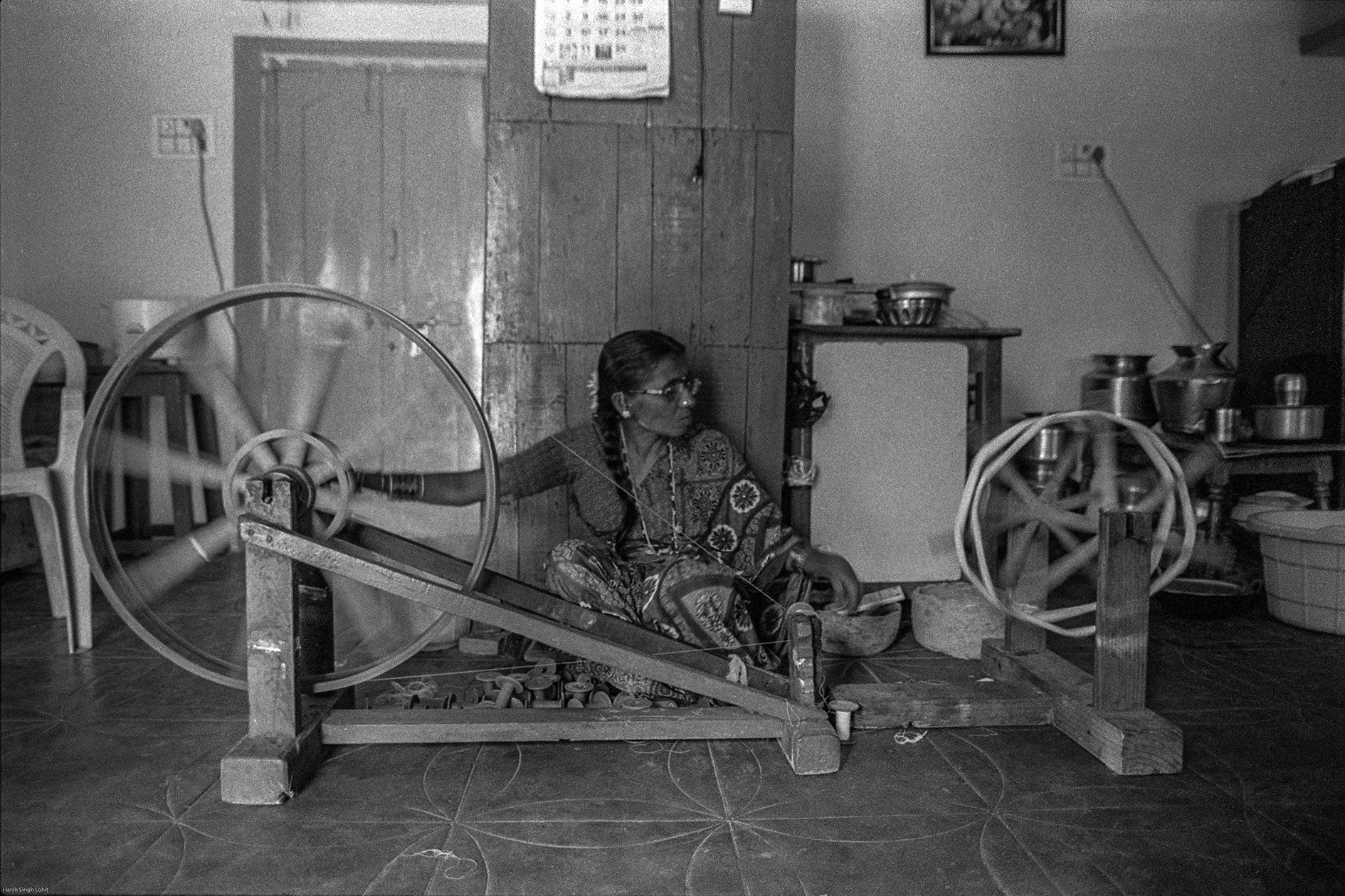Handloom has been the backbone of artisanal textile craft in India for thousands of years, with spinning and weaving skills handed down through generations. Long before the giant spinning machines of today, spinning was mastered in homes, using locally grown cotton, bought and sold from each other within families and villages, and utilising natural dyes made from botanical resources. So when the large scale machines and the chemical dyes arrived in India, it completely altered and changed the way that rural artists could supply and sell their textile crafts – local economies, small trades and barter between farmers and artisans eventually all but faded. This is why Mahatma Gandhi (Gandhiji) praised handlooms as the fabric of his nation, the heritage heart of India, and foresaw its excellent employment potential as a means to mitigate rural poverty.
Malkha works towards this return to the old way of making cotton, and the restoration of a local, robust and resilient handloom cotton industry, combining thousands of years of Indian cotton making and natural dye expertise.

We searched far and wide on our travels through India and with years of research into textile arts to find a source of handloom cotton that sustains community craft and doesn't take a huge cost on the earth, and are so happy to now be working with the incredible materials from Malkha as the source of fabrics for our loungewear. Not only does Malkha showcase the beauty of traditional weaving craft and natural dyes but summarises the Tulasii ethos to create ethical fashion with a purpose.
With four weaving units in Ellanthakunta, Tangalapally and Pachnuru (in Telangana) and Kaza (in Andhra Pradesh), they seek to restore spinning as a viable rural occupation, supporting both weavers working in loom sheds as well as weavers working on their looms at homes and enabling farmers, spinners and weavers to benefit from each other, creating an incentive for cotton making skills to be once again passed from generation to generation.

Malkha yarn-making is small in scale, providing work for village folk in their own neighbourhoods, using cotton purchased from farmers in Jamikunta, 80 kilometres from their spinning units, keeping the supply chain as minimal and as local as possible. Their unique yarn is woven into cloth on handlooms by both men and women, using bamboo or millet stalk reeds for the weaving which are more flexible, allowing the slubs of Malkha yarn to come through in both warp and weft – those who purchase any of our Malkha pieces will notice both directions, vertical and horizontal, of the slubbed, coarse-and-fine yarn in Malkha fabric. It's also breathable for year-round comfort and only gets softer and more comfortable with each washing and wear.

The yarn produced by Malkha spinning may be woven into kora (i.e. non-dyed) fabric on the handloom, while a combination of naturally-dyed coloured yarns (and kora yarn, if required) go into the weaving of coloured handwoven cloth. At Tulasii, we use both in our loungewear collection – the Basic Pant relies on the natural beauty of Kora, while our Indus robes showcase the incredible beauty of Indigo, the crown jewel of natural dyes.
The traditional South Indian method of indigo dyeing involves fermenting the dye bath with a mixture of lime and the seeds of Cassia Tora. This complex process takes several days. The yarn or fabric to be dyed is dipped into the fermented vats several times and allowed to oxidize between dips.

This painstaking process of weaving and dye, all produced with heart and by the human hand, is what makes our Malkha robes so special, and so unique.
That's why I am so happy to be able to bring together these stories into one whole – combining our work with the beautiful Saheli Women in Bhikamkor, Rajasthan, and our block printers in Bagru, with the traditional weavers and natural dye artisans from Malkha.

Photography by Harsh Lohit. All images courtesy of Malkha.








